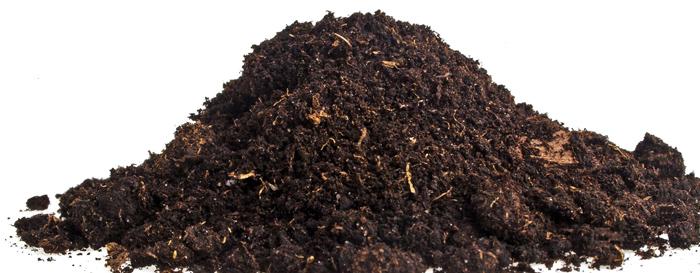October 2018
DR MARYKE CRAVEN, CHARNÉ MYBURGH, OWEN RHODE and DR JEANETTA SAAYMAN-DU TOIT, ARC-Grain Crops, Potchefstroom
Weeds are a persistent threat to crop productivity worldwide. In an effort to optimise yield by controlling these unwanted plants, modern agriculture has become heavily dependent on the use of herbicides. Non-target organisms are unfortunately equally exposed to these chemicals which have the potential to, unintentionally, also harm them.
According to international literature, this may lead to a reduction in biodiversity and the provision of ecosystem services that support food security and on-farm profitability. Glyphosate is the world’s most commonly used herbicide and has been extensively studied for its effect on soil microbial communities than any other herbicide.
In this second part of our series we will focus on some of the international findings surrounding the effects of glyphosate and other herbicides observed on the beneficial fungal and bacterial communities. Due to the sheer magnitude of research findings available, we will only highlight some of the findings published internationally and the various views surrounding this topic.
Why are fungi and bacteria important?
The simple answer to this question would be that fungi and bacteria are the decomposers in the biological world. They digest the decaying leaves and rotting bodies of plants and animals, and in so doing return their elements to the soil. Without them, the earth would basically be littered with dead organic material, and all life would cease to exist as plants will not have the required nutrients to grow, which have a knock-on effect on every living thing.
However, fungi and bacteria degrade plant residues differently and have different roles in the recycling of nutrients, which is partly due to the different habitats they prefer within the soil and the different types of organic matter they consume. Bacteria within the rhizosphere (the region of soil in the vicinity of plant roots) are involved in biogeochemical processes within the soil such as carbon, nitrogen, and phosphorus cycling.
Fungi and bacteria differ in their responses to changes in agricultural management practices with fungi usually being more sensitive to these changes. The fungal-to-bacterial ratio is therefore a good indicator of environmental changes in the soil. Based on the function of fungi and bacteria in soil, a reduction of their numbers may affect soil respiratory activity, soil enzymes and microbial diversity, as well as rates of carbon and nitrogen turnover.
Herbicides and its effect on fungi and bacteria in general
As already indicated in Part 1 of our series (SA Graan/Grain September-issue), there is an overwhelming number of contradictory findings concerning the impact of herbicides on fungi and bacteria. The effects of paraquat and glyfosinate on soil bacteria and fungi are either positive or negative effects1 – 4, or no significant effect at all5.
A similar trend is observed with international research findings pertaining to glyphosate, with some studies reporting a negative effect on fungal growth6 and reduced colonisation by beneficial bacteria7, or negligible or minor effects on microbial community structure when glyphosate was applied at recommended field-rate (stated as 50 mg/kg)8 – 12.
Other studies state that despite an initial negative effect directly after application, the rhizobacterial community managed to recover by the time the plants reached their final growth stage13.
Researchers speculate that the reason for inconsistencies in findings can be anything from microbes reacting differently to different chemicals11, to differences in soil characteristics14 or to different formulations being used15, to name but a few. Some studies, however, refute certain aspects of such speculations. A research study, published during 201213 concluded that although the composition of the bacterial communities differed between the soil types included in their study, the effects of the herbicides tested remained very similar with regards to the same bacterial groups.
Comparative studies have, however, indicated that not all herbicides are equally damaging. An acetochlor and terbuthylazine product evaluated, demonstrated to be in general much more aggressive than the glyphosate-based product tested in various studies13,16.
What about herbicides and biocontrol agents?
Several Pseudomonas species have been employed as effective biocontrol agents due to their production of a range of antibiotic compounds, iron-scavenging molecules and plant growth promotors. A recent study found negative consequences of glyphosate on this genus17 with the effects observed being both species and strain-dependent.
When P. protegens, a bacteria used as a biocontrol agent for cereal crops, and P. fluorescens, used as a fungus biocontrol for fruit trees, were exposed to varying glyphosate concentrations, no negative effects were observed. In two species of P. putida, used as soil fungus control for maize and other crops, the bacteria had notably stunted growth.
A study published during 2008 report similar effects regarding the toxic effect of glyphosate and 2,4-D on the water hyacinth biocontrol agent, Alternaria alternata18. Although neither of the two herbicides actually killed the fungus, both inhibited its growth. Glyphosate though, delayed mycelial growth yet stimulated sporulation while 2,4-D inhibited both growth and sporulation.
Glyphosate at low concentration did not affect the virulence of A. alternata, while fungi grown on 2,4-D amended plates lost their virulence. Another study19 discourages the joint application of P. lagenophorae (a biocontrol agent for the annual weed Senecio vulgaris) with 2,4-D, glyphosate and linuron to control S. vulgaris due the detrimental effect that these herbicides have on the biocontrol agent.
Rollan and his research group20 were, however, not able to find any detrimental effect of herbicides such as glyphosate, imazamox or imazethapyr on Trichoderma harzianum and again underlined the critique against herbicide studies which focuses on soil-free media, rather than adding the herbicide directly to soil.
As herbicide application could potentially have an effect on the efficiency of the biocontrol agents, producers should discuss this matter with the relevant suppliers before applying them. Consideration could be given to different application times for herbicides and biocontrol agents.
A study of note…
A study by an USA based research group21, which published their results during 2014, investigated the effect of long term glyphosate use on the microbial community. The community evaluation included gram positive bacteria, gram negative bacteria, fungi, actinomycetes, arbuscular mycorrhizal fungi and eucaryotes.
Two soils were compared, one with no-glyphosate use history as opposed to one with a history of more than ten years of glyphosate tolerant cropping practices. Glyphosate treated and untreated residues were respectively also added to these soils and the microbial activity monitored for 30 days.
With this study Ney and his colleagues demonstrated that the initial response of the two soil types differed during plant decomposition, but that the effect diminished over time. The residue type used, in addition, did not have an effect on the end result.
They concluded that the microbial community had adjusted over time to such an extent that the soil with a glyphosate history had a community primed for glyphosate residues, whereas the non-glyphosate soil was starting to change, or adjust in response to the decomposition of glyphosate residues. Their data suggested that the microbial communities in the soil with a history of long-term glyphosate exposure had adapted to glyphosate tolerant residues and thus would show fewer microbial responses during decomposition than that of a soil with no glyphosate use history.
Their study also answered the question whether plant residues from a glyphosate tolerant cultivar would impact on soil health, in that they concluded that it is the exposure to glyphosate and not the genetically tolerant plant material itself that causes microbial responses.
Food for thought
It is internationally accepted that the behaviour of pesticides in soil will depend on a number of factors. The chemical and physical properties of the pesticide itself as well as environmental factors such as temperature, precipitation, wind, sunlight, soil properties such as moisture, organic matter, pH, available nutrients, interactions between solid, liquid and gaseous phases of the soil are all part and parcel to establishing the persistence, availability and toxicity of pesticides22.
Based on their review of international research findings, two authors (Lock and Zablotowicz)23 which contributed to the book titled Managing soil quality: Challenges in modern agriculture, concluded that microbial and faunal populations generally demonstrated tolerance of pesticides, with only minor short lived disturbances being exhibited when recommended rates are used, whilst major biotic processes such as enzyme activity, respiration and carbon and nitrogen transformations are generally minimally impacted.
There is, however, the other side of the coin that links in with the Ney research group findings21, and which must be considered. In a recent study published in February 2018, an Australian-based research group24 which focused on the effects of glyphosate, glyphosinate, paraquat and paraquat-diquat on soil microbial and bacterial diversity, were unable to provide evidence of any negative effect on the various parameters measured due to a once-off application by the various herbicides.
They concluded that the lack of observed reaction of microbial communities might, amongst others, be due to the fact that years of herbicide application on the soils used in the study might have resulted in only herbicide tolerant populations of microbes being present in the soil.
Population shifts, on the basis of survival of the fittest, might have accordingly already occurred in our soils over the past couple of decades as a result of extensive usage of various herbicides.
A USA research group25 similarly concluded that shifts in subpopulations of particularly the Xanthamonadales and Acidobacteria bacterial groups are possible under long-term glyphosate tolerant cropping. Their study suggested that bacteria from the family Xanthomonadacea are better adapted to and/or enriched by environments containing glyphosate.
On the other hand, Acidobacteria which is highly involved in biogeochemical processes, such as cellulose degradation (process involved with breaking down of cell walls of plant material), decreased in response to glyphosate application.
Decreases in the abundance of these bacteria over the long-term could impair the ability of soil to perform certain biogeochemical reactions performed by these organisms.
Interestingly they found the reduction effect to be more dramatic in maize as opposed to what was observed in soybean, suggesting that any subsequent effects on biogeochemical processes due to this bacterial group would be more pronounced in maize. The authors concluded by stating that it is still unknown whether this shift affects functional capacity of the soil under glyphosate tolerant cropping systems25.
The question we should be asking is whether we are accordingly still seeing or measuring today what was present before we became so reliant on not only herbicides but pesticides in general, or are we actually looking at adapted communities, that continue to evolve based on what we expose them to?
If the latter is the case, how efficient are these newly adapted communities compared to their ‘predecessors’, and does that have any effect at all on our current agricultural outputs?
In Part 3 of this series, focus will be placed on research findings published on the impact of glyphosate and other herbicides on pathogenic fungi.
Readers are welcome to contact the authors at ARC-Grain Crops with any enquires they might have at 018 299 6100.

References
| 1 | Sebiomo, A, Ogundero, VW and Bankole, SA. 2011. Effect of four herbicides on microbial population, soil organic matter and dehydrogenase activity. African Journal of Biotechnology 10, 770 – 778 (2011). |
| 2 | Sannino, F and Gianfreda, L. 2001. Pesticide influence on soil enzymatic activities. Chemosphere 45, 417 – 425. |
| 3 | Gyamfi, S, Pfeifer, U, Stierschneider, M and Sessitsch, A. Effects of transgenic glufosinate-tolerant oilseed rape (Brassica napus) and the associated herbicide application on eubacterial and Pseudomonas communities in the rhizosphere. FEMS Microbiol. Ecol. 41,181 – 190 (2002). |
| 4 | Sessitsch, A, Gyamfi, S, Tscherko, D, Gerzabek, MH and Kandeler E. 2005. Activity of micro-organisms in the rhizosphere of herbicide treated and untreated transgenic glufosinate-tolerant and wildtype oilseed rape grown in containment. Plant Soil 266, 105 – 116. |
| 5 | Schmalenberger, A and Tebbe, CC. 2003. Bacterial diversity in maize rhizospheres: Conclusions on the use of genetic profiles based on PCR-amplified partial small subunit rRNA genes in ecological studies. Mol. Ecol. 12, 251 – 62. |
| 6 | Tanney, JB and Hutchison, LJ. 2010. The effects of glyphosate on the in vitro linear growth of selected microfungi from a boreal forest soil. Canadian Journal of Microbiology 56, 138 – 144. |
| 7 | Zobiole, LHS, Kremer, RJ, Oliveira, RS and Constantin, J. 2011. Glyphosate affects micro-organisms in rhizospheres of glyphosateresistant soybeans. Journal of Applied Microbiology 110, 118 – 127. |
| 8 | Ratcliff, AW, Busse, MD, Shestak, CJ. 2006. Changes in microbial community structure following herbicide (glyphosate) additions to forest soils. Applied Soil Ecology 34, 114 – 124. |
| 9 | Lane, M, Lorenz, N, Saxena, J, Ramsier, C and Dick, RP. 2012. The effect of glyphosate on soil microbial activity, microbial community structure, and soil potassium. Pedobiologia 55, 335 – 342. |
| 10 | Rosenbaum, KK, Miller, GL, Kremer, RJ and Bradley, KW. 2014. Interactions between glyphosate, fusarium infection of common waterhemp (Amaranthus rudis), and soil microbial abundance and diversity in soil collections from Missouri. Weed Science 62, 71 – 82. |
| 11 | Hart, MM, Powell, JR, Gulden, RH, Dunfield, KE, Pauls, KP, Swanton, CJ, Kliromonos, JN, Antunes, PM, Koch, AM and Trevors, JT. 2009. Separating the effect of crop from herbicide on soil microbial communities in glyphosate-resistant corn. Pedobiologia 52, 253 – 262. |
| 12 | Weaver, MA, Krutz, LJ, Zablotowicz, RM and Reddy, KN. 2007. Effects of glyphosate on soil microbial communities and its mineralization in a Mississippi soil. Pest Management Science 63, 388 – 393. |
| 13 | Barriuso, J and Mellado, RP. 2012. Relative effect of glyphosate on glyphosate-tolerant maize rhizobacterial communities is not altered by soil properties. Journal of Microbiology and Biotechnology 22, 159 – 165. |
| 14 | Nguyen, DB, Rose, MT, Rose, TJ, Morris, SG and Van Zwieten, L. 2016. Impact of glyphosate on soil microbial biomass and respiration: A meta-analysis. Soil Biology and Biochemistry 93, 50 – 57. |
| 15 | Rai, JPN. 1992. Effect of long-term 2,4D application on soil microbial populations. Biology and Fertility of Soils 13, 187 – 191. |
| 16 | Valverde, JR, Marin, S and Mellado, R. 2014. Effect of herbicide combinations on BT-Maize rehizobacterial diversity. Journal of Microbiology and Biotechnology 24, 1 473 – 1 483. |
| 17 | Aristilde, L, Reed, ML, Wilkes, RA, Youngster, T, Kukurugya, MA, Katz, V and Sasaki, CRS, 2017. Glyphosate-induced specific and widespread perturbations in the metabolome of soil Pseudomonas species. Frontiers in Environmental Science 5:34 DOI10.3389/fenvs.2017.00034. |
| 18 | Sushilkumar, PR and Pandey AK. 2008. Deleterious effect of herbicides on waterhyacinth biocontrol agents Neochetina bruchi and Alternaria alternata Biocontrol. SciTechnol 18, 517 – 526. |
| 19 | Wyss, GS and Müller-Schärer, H. 2001. Effects of selected herbicides on the germination and infection process of Puccinia lagenophora, a biocontrol pathogen of Senecio vulgaris. Biological Control 20, 160 – 166. |
| 20 | Rollán, MC, Mónaco, C, Lampugnanin, G, Arteta, N, Bayo, D and Urratia, MI. 2007. Effects of post-emergent herbicides on Trichoderma harzianum, a potential biocontrol agent against Sclerotinia sclerotiorum. Acta Gronomica Hungarica 55, 355 – 362. |
| 21 | Ney, M, Hoilett, N, Ramsier, C, Renz, P and Dick, RP. 2014. Microbial community structure in soils amended with glyphosate-tolerant soybean residue. Applied Ecology and Environmental Science 3, 74 – 81. |
| 22 | Beulke, S and Malkomes, HM. 2001. Effects of the herbicides metazachlor and dinoterb on the soil microflora and the degradation and sorption of metazachlor under different environmental conditions. Biology and Fertility of Soils, 33, 467 – 471. |
| 23 | Locke, MA and Zablotowich, RM. 2004. Pesticides in soil – benefits and limitations to soil health. Pages 239 – 260 In: Managing soil quality: Challenges in modern agriculture (eds P SchjØnning, S Elmholt and BT Christensen). CAB International. |
| 24 | Dennis, PG, Kukulie, T, Forstner, C, Orton, TG and Pattison, AB. 2018. The effects of glyphosate, glufosinate, paraquat and paraquat-diquat on soil microbial activity and bacterial, archaeal and nematode diversity. Science Reports 8: 2119. DOI:101038/s41598-018-20589-6. |
 25 25 |
Newman, MM, Hoilett, N, Lorenz, N, Dick, RP, Liles, MR, Ramsier, C and Kloepper, JW. 2016. Glyphosate effects on soil rhizosphere-associated bacterial communities. Science of Total Environment 543, 155 – 160. |
Publication: October 2018
Section: On farm level

















